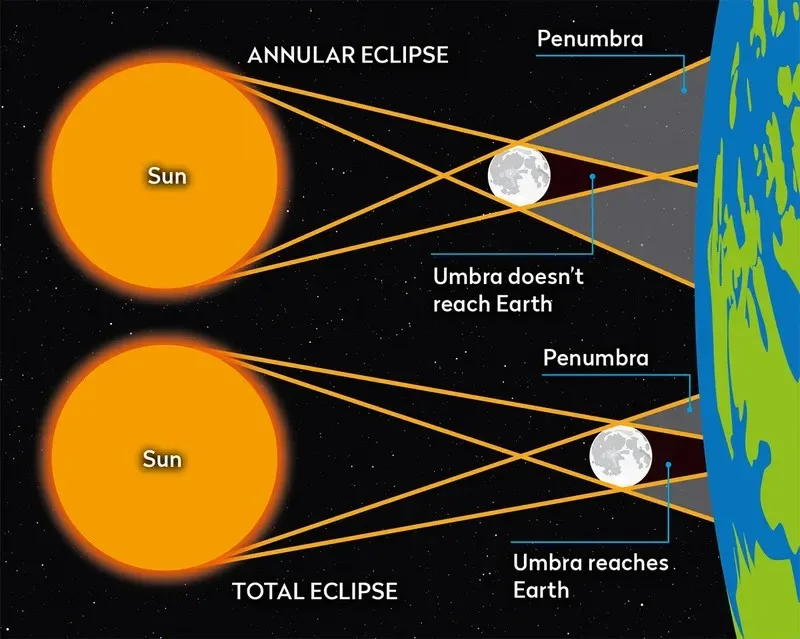Syllabus :GS1/ Geography
In News
- On October 2, an annular solar eclipse will be visible in parts of South America, while a partial solar eclipse can be seen in regions including South America, Antarctica, North America, and the Atlantic and Pacific Oceans, including Hawaii.
About Solar eclipses
- Solar eclipses occur when the Sun, Moon, and Earth align, causing the Moon to pass between the Sun and Earth.
- This alignment casts a shadow on Earth, partially or fully blocking the Sun’s light in certain areas.
- Eclipses are infrequent because the Moon’s orbit is not in the same plane as that of the Sun and Earth.
- These alignments occur during “eclipse season,” which happens twice a year.
Types
- Total Solar Eclipse: This occurs when the Moon completely blocks the Sun as it passes between the Sun and Earth. Observers in the center of the Moon’s shadow will experience a total eclipse, where the sky darkens, and they can briefly remove their eclipse glasses to view the Sun’s corona.

- Annular Solar Eclipse: This happens when the Moon is at its farthest point from Earth, appearing smaller than the Sun and creating a “ring of fire” effect as it covers the center of the Sun.
- Partial Solar Eclipse: In this type, the Sun, Moon, and Earth are not perfectly aligned, so only part of the Sun is obscured, giving it a crescent shape. Observers outside the path of totality or annularity will see a partial eclipse.
- Hybrid Solar Eclipse: This occurs when the eclipse shifts between total and annular due to the curvature of the Earth’s surface as the Moon’s shadow moves across the globe.
Source:IE
Previous article
International Day of Older Persons, 2024
Next article
Overseas Citizen of India (OCI)